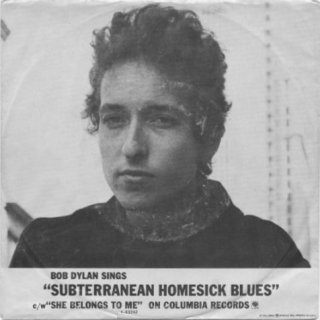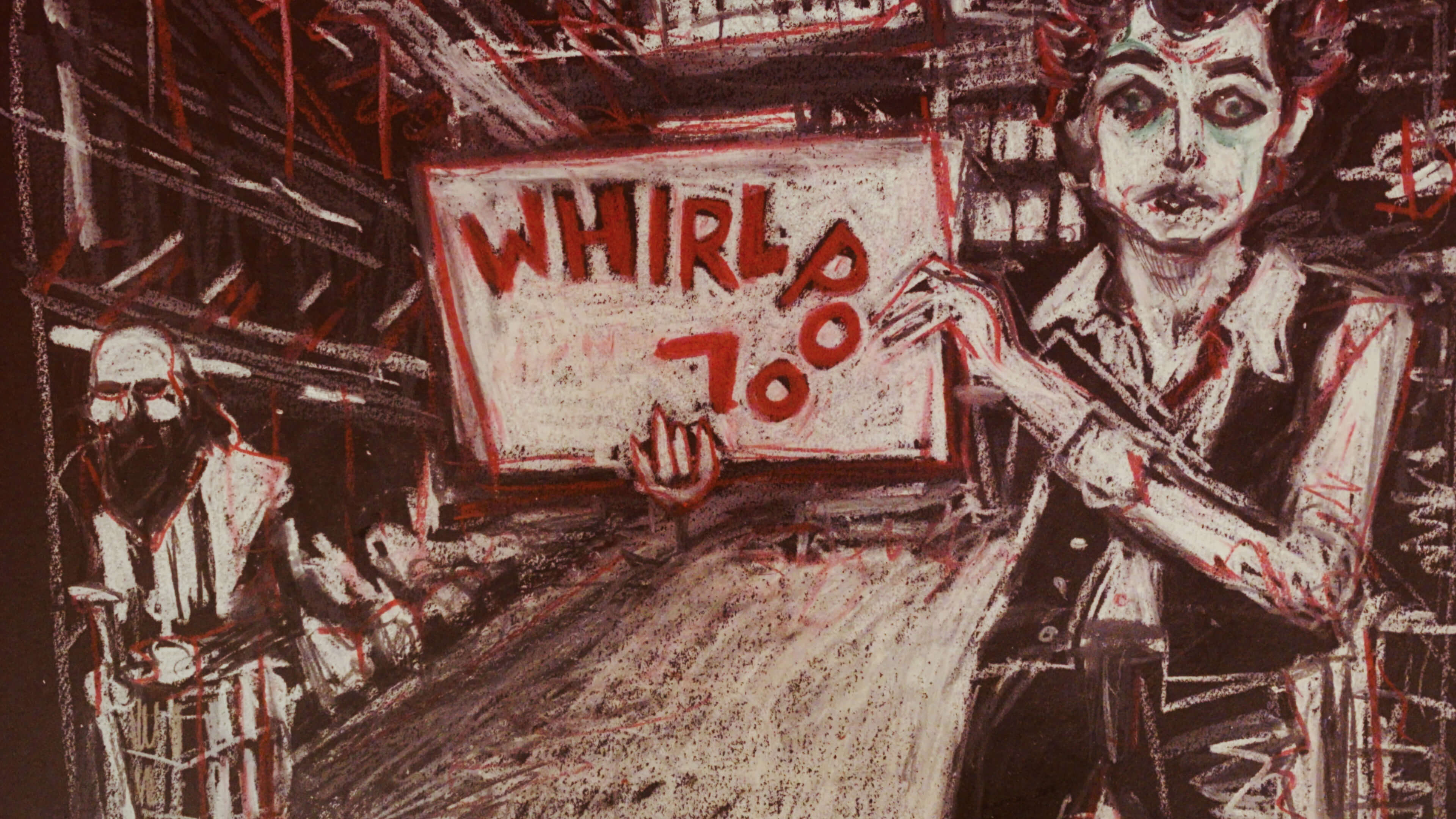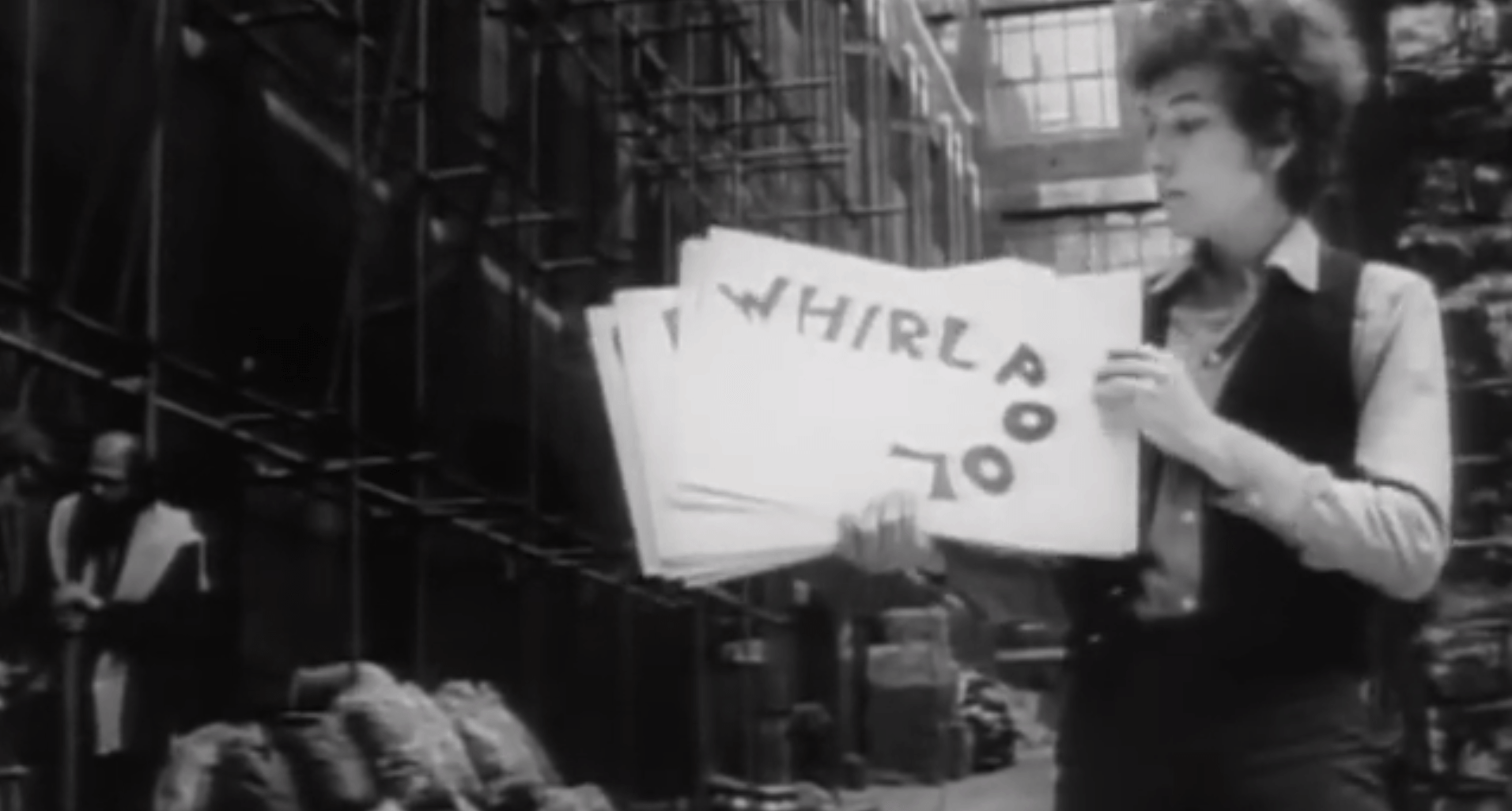The Bob Dylan ‘Subterranean Homesick Blues’ Video: Then + Now
by Best Classic Bands StaffTo commemorate Bob Dylan’s 60th Anniversary as a recording artist in 2022, a new music video of 1965’s “Subterranean Homesick Blues”—featuring a kinetic collage of visuals by a diverse array of artists inspired by the original video’s lyric cue cards—was issued on May 6 of that year. The video came from Sony Music Entertainment, Columbia Records and Legacy Recordings (SME’s catalog division).
The lead track and first single from 1965’s Bringing It All Back Home (Dylan’s fifth studio album for Columbia), “Subterranean Homesick Blues” was one of the artist’s first releases to showcase his new electric sound and became the first Dylan record to break into the U.S. Top 40. A groundbreaking highly influential record, “Subterranean Homesick Blues” has been cited as a precursor to rap while the song’s video clip–featuring Dylan staring into the camera while throwing out lyric/cue cards–is widely acknowledged as one of the cornerstones of music video history.
The song is featured in the Dylan biopic, A Complete Unknown, which opened on Christmas Day 2024. The movie, from Searchlight Pictures, was directed by James Mangold, who also wrote the screenplay with longtime film critic Jay Cocks, based on Elijah Wald’s book, Dylan Goes Electric! It stars Timothée Chalamet, who was 28 years old during the filming earlier this year. A Complete Unknown is set during Dylan’s days as a Greenwich Village folk singer in the New York City music scene of the early ’60s, culminating with his decision to play a transformational electric set at the 1965 Newport Folk Festival, which at the time was seen as one of popular music’s most shocking events. The film takes its title from the iconic lyric from 1965’s “Like a Rolling Stone.” [Wald’s book is available in the U.S. here and in the U.K. here.]
The “Subterranean Homesick Blues 2022” video can also be found on the Dylan60 microsite, which also includes both the original and the newly designed lyric/cue cards (with artist attribution for the new images) and the classic original clip starring Bob Dylan (with background cameo appearances by Allen Ginsberg and Bob Neuwirth).
Developed by the independent creative agency Intro, and Sony Music’s Josh Cheuse, the new “Subterranean Homesick Blues 2022” clip pays homage to the iconic opening sequence of D.A. Pennebaker’s Dont Look Back (the game-changing cinéma vérité documentary chronicling Dylan’s 1965 U.K. tour) with new lyric/cue card visuals created by contemporary artists, filmmakers, musicians and graphic designers. The handwritten cue cards in Pennebaker’s original clip–featuring selected words and phrases from the song seasoned with deliberate misspellings, puns and ‘hidden’ jokes—have been visually reinterpreted and redesigned for the new short film by Julian House, Patti Smith, Zep, Cey Adams, Francis Cabrel, Wim Wenders, Anthony Burrill, Naoki Urasawa, Michael Joo, John Squire, Azazel Jacobs, Bruce Springsteen, Futura, Noel Fielding, Jim Jarmusch, Bobby Gillespie, Paris Redux, Wolfgang Niedecken, Jun Miura, Kate Gibb, Jonathan Barnbrook, Dave Shrigley, and Eric Haze.
Watch “Subterranean Homesick Blues 2022”
Dylan, of course, was a trendsetter, not a follower, and although he never set out to make the 1965 equivalent of a rock video, he ended up making one of the first—and one of the most classic. On May 8 of that year, Dylan walked into an alley next to the Savoy Hotel in London, accompanied by two friends, poet Allen Ginsberg and musician/producer Bob Neuwirth. A camera crew followed.
 Dylan took with him a pile of oversized cue cards, each emblazoned with one or a few words, some bearing lyrics from the song, others not related at all (the cards were created by the three of them and Scottish singer/songwriter Donovan). Then, to the tune of “Subterranean Homesick Blues,” Dylan stood in front of a camera, staring straight ahead expressionless or off to the side at the cards, holding up one card after another and dropping them to the ground when he was done with each. Ginsberg and Neuwirth are seen off to the side, paying no attention to the man in the vest, tossing the cards. At the end, Dylan simply drops the last one and walks off-camera.
Dylan took with him a pile of oversized cue cards, each emblazoned with one or a few words, some bearing lyrics from the song, others not related at all (the cards were created by the three of them and Scottish singer/songwriter Donovan). Then, to the tune of “Subterranean Homesick Blues,” Dylan stood in front of a camera, staring straight ahead expressionless or off to the side at the cards, holding up one card after another and dropping them to the ground when he was done with each. Ginsberg and Neuwirth are seen off to the side, paying no attention to the man in the vest, tossing the cards. At the end, Dylan simply drops the last one and walks off-camera.
Related: Bob Dylan in 1965: Evolving to Electric
The black-and-white clip wasn’t meant to be a “video.” It served its purpose and probably cost nothing to make. Nothing fancy, no great statement. But more than 55 years later it’s still a fascinating few minutes of film.
Watch the original film clip
And here’s Chalamet’s performance of the song in A Complete Unknown.
Related: Pennebaker died in 2019
The Bob Dylan Center opened in Tulsa, Okla., on May 10, 2022. Designed by Olson Kundig, the Center houses and exhibits more than 100,000 exclusive cultural treasures created and owned by Bob Dylan over seven decades. These include handwritten lyric manuscripts to some of the world’s most treasured songs, previously unreleased recordings, never-before-seen film performances, rare and unseen photographs, visual art and other priceless items spanning Dylan’s unparalleled career as one of the world’s most important cultural figures.








No Comments so far
Jump into a conversationNo Comments Yet!
You can be the one to start a conversation.